The marketplace has always been a site of transformation, but under capitalism, it has become an alchemical laboratory where base matter undergoes psychological transmutation into objects of desire. Jung’s lifelong fascination with alchemy was not mere historical curiosity but recognition that alchemical symbolism encoded profound psychological truths about transformation processes. When we examine modern consumer psychology through this alchemical lens, we discover that marketing and branding serve as contemporary forms of the ancient art, transforming prima materia into psychological gold through projection and imagination. The Journal of Consumer Research regularly publishes studies that inadvertently document these alchemical processes without recognizing their depth psychological significance.
The alchemical opus begins with the recognition of prima materia, the raw, undifferentiated material that serves as the starting point for transformation. In consumer capitalism, this prima materia consists of basic materials and labor, often extracted under conditions of exploitation and environmental destruction that must remain unconscious for the alchemical process to succeed. The transformation of coffee beans picked by impoverished farmers into a Starbucks experience worth twenty times the cost of raw materials represents a successful alchemical operation where suffering transmutes into pleasure through psychological projection.
The nigredo, or blackening phase, corresponds to the breakdown of previous forms and the confrontation with shadow material. In consumer psychology, this manifests as the creation of dissatisfaction with current states, the marketing-induced awareness of lack, inadequacy, or obsolescence. The fashion industry has perfected this nigredo process, creating seasonal cycles of psychological death and rebirth where last season’s purchases undergo nigredo, becoming psychologically worthless to make space for new consumption. The Ellen MacArthur Foundation’s research on fast fashion documents the material waste of this process without recognizing its psychological function as manufactured nigredo.
The albedo, or whitening phase, involves purification and the emergence of new possibilities. In marketing terms, this is the moment when the consumer becomes aware of the product as a solution to their newly recognized lack. The product appears as a source of light in the darkness of the nigredo, promising transformation and renewal. Apple’s marketing genius lies in its mastery of the albedo phase, presenting its products as pure, white, minimalist objects that promise to purify and simplify the chaos of modern life.
The rubedo, or reddening phase, represents the final transformation where the philosophical stone emerges, capable of transmuting base metals into gold. In consumer psychology, this is the moment of purchase and initial ownership when the product temporarily delivers its psychological promise. The unboxing video phenomenon on YouTube represents a collective fascination with this rubedo moment, the revelation of the transformed object in its full psychological potency. Yet this transformation proves temporary, requiring endless repetition of the cycle.
Brands function as alchemical vessels, containers for the transformation process that hold and shape the psychological projections of consumers. The brand becomes what Jung called a temenos, a sacred space where transformation can occur. The Harvard Business Review’s research on brand loyalty documents patterns of attachment that resemble religious devotion, yet fails to recognize brands as containers for alchemical projection.
The logo serves as an alchemical sigil, a symbolic seal that marks the completion of transformation. The Nike swoosh, Apple’s bitten apple, McDonald’s golden arches function as magical symbols that signify the successful transmutation of prima materia into psychological gold. These symbols carry archetypal charge, connecting consumers to deeper layers of the collective unconscious. The transformation of a piece of leather and rubber into a Nike shoe worth hundreds of dollars depends entirely on the presence of the swoosh sigil.
Luxury brands have perfected the alchemical art of transforming relatively modest materials into objects of enormous psychological value. A Hermès Birkin bag, constructed from leather and metal not fundamentally different from other bags, commands prices exceeding median annual incomes. This represents successful alchemical transformation where the object becomes a philosophical stone, capable of transmuting the owner’s psychological state through possession. The Bain & Company luxury goods research tracks these markets without recognizing them as trading in alchemical rather than material value.
The concept of “brand essence” directly parallels the alchemical notion of the quinta essentia, the fifth element that transcends the material four. Marketers speak of capturing and communicating brand essence in language that would be familiar to medieval alchemists. This essence is understood to be more real than the physical products themselves, existing in a psychological realm that transcends material reality.
Celebrity endorsement operates as a form of alchemical contagion, where the psychological gold of fame transmutes products through association. The celebrity serves as a kind of philosophical stone, capable of transforming anything they touch into an object of desire. The influencer economy has democratized this process, creating thousands of minor alchemists capable of performing smaller transformations for niche audiences. The Influencer Marketing Hub’s industry report documents a multi-billion-dollar industry built on these alchemical operations.
The transformation of experiences into commodities represents a new frontier in marketplace alchemy. The experience economy sells not objects but psychological states, transforming moments of time into packaged products. The yoga retreat, the music festival, the adventure vacation promise alchemical transformation of the self through purchased experience. Yet these experiences often follow the same pattern as material consumption, with the promised transformation proving temporary and requiring repetition.
Color psychology in marketing directly parallels alchemical color symbolism. The use of black for luxury, white for purity, red for energy, gold for premium status follows alchemical associations that Jung documented in his studies. The Pantone Color Institute’s research on color and emotion inadvertently documents these alchemical correspondences without recognizing their depth psychological significance.
The phenomenon of “dropshipping” and arbitrage reveals the purely psychological nature of value creation in the alchemical marketplace. Entrepreneurs who never touch physical products create value purely through psychological manipulation, transforming cheap Chinese goods into premium products through branding and marketing. The transformation occurs entirely in the psychological realm, with no material change to the product itself.
Packaging design serves as the alchemical vessel’s decoration, covered with symbols and colors that guide the transformation process. The unpackaging of an Apple product, with its precisely engineered reveals and nested boxes, creates a ritual experience that facilitates psychological transformation. The packaging often costs more than the product itself, revealing that the true value lies in the psychological rather than material realm.
Social media has created new alchemical laboratories where ordinary people attempt to transmute their lives into brands. The Instagram influencer performs daily alchemical operations, transforming mundane experiences into aspirational content. The selfie undergoes multiple transformations through filters and editing before achieving its final form as psychological gold. The Pew Research on social media use documents behaviors that represent attempts at self-alchemical transformation.
The subscription economy represents an attempt to stabilize the alchemical transformation, creating continuous streams of transmutation rather than discrete events. The monthly subscription box delivers regular doses of alchemical transformation, maintaining the consumer in a perpetual state of becoming. This model recognizes that the transformation is always temporary, building repetition into the business model itself.
Algorithmic recommendation engines serve as automated alchemists, analyzing psychological patterns to predict which transformations will succeed for which consumers. These systems operate like mechanical philosophical stones, capable of identifying the precise products that will undergo successful transformation in each individual’s psychological space. The MIT research on recommendation algorithms documents these systems without recognizing their alchemical function.
The sharing economy initially promised to transcend the alchemical marketplace by enabling direct peer-to-peer exchange. Yet platforms like Airbnb and Uber quickly became new alchemical laboratories, transforming spare rooms and personal vehicles into commodified experiences through the alchemy of platform capitalism. The platform serves as the alchemical vessel, facilitating transformation while extracting value from the process.
NFTs represent perhaps the purest expression of marketplace alchemy, where digital files with no material existence whatsoever undergo transformation into objects worth millions. The blockchain serves as an alchemical seal, certifying the transformation and creating scarcity from infinite reproducibility. The NFT marketplace is literally selling nothing but psychological transformation, pure alchemy without any material substrate.
The phenomenon of “brand activism” attempts to transmute consumption into political action, allowing consumers to feel they are transforming the world through their purchases. This represents a new form of alchemy where guilt transmutes into virtue through consumption. The Edelman Trust Barometer reveals consumers increasingly expect brands to perform this alchemical function, transforming their consumption into moral action.
Greenwashing represents a kind of false alchemy, where products undergo superficial transformation to appear environmentally conscious without actual change. This shadow alchemy reveals how the transformation process can be corrupted, creating psychological effects without corresponding material reality. The consumer participates in an alchemical theater that provides psychological benefits while perpetuating the very problems it claims to solve.
The gamification of consumption adds game-like elements to shopping, transforming purchasing into play. Points, levels, achievements, and rewards create an alchemical framework where consumption becomes a form of psychological progression. The Journal of Marketing research on gamification documents these techniques without recognizing them as alchemical operations designed to facilitate psychological transformation.
The personalization of products through customization and configuration allows consumers to participate in their own alchemical transformation. The ability to choose colors, add monograms, or configure specifications creates a sense of participation in the transformation process. This participatory alchemy increases psychological investment and attachment to the resulting product.
Scarcity marketing creates alchemical pressure through limitation and exclusivity. The limited edition, the flash sale, the exclusive drop intensifies the transformation process by adding temporal pressure and social competition. The Journal of Consumer Psychology research on scarcity documents how scarcity increases perceived value through purely psychological mechanisms.
The secondhand and vintage markets represent a kind of reverse alchemy where old objects undergo retransformation into new value. The thrift store find, the vintage score, the antique discovery involves rediscovering the alchemical charge in objects that had lost their transformative power. This circular alchemy suggests that the transformation is never permanent, that objects can undergo multiple cycles of psychological death and rebirth.
The direct-to-consumer revolution attempts to short-circuit traditional retail alchemy by eliminating intermediaries. Yet these brands simply perform their own alchemical operations, transforming “cutting out the middleman” into a source of value itself. The transformation still occurs, just through different narrative structures and psychological projections.
Understanding the marketplace as an alchemical laboratory reveals both its power and its limitations. The transformations it offers are real in psychological terms, creating genuine changes in emotional and mental states. Yet these transformations remain temporary and ultimately circular, requiring endless repetition without achieving the permanent transformation that true alchemy sought.
The question becomes whether we can imagine forms of exchange that facilitate genuine rather than temporary transformation. Can we create marketplaces that transform not just our psychological projections but our actual capacities and relationships? The cooperative economy, gift economy, and various alternative economic forms suggest different alchemical processes that might create more lasting transformations.
Economic Complexes: How Money Constellates Autonomous Partial Systems
Jung’s theory of complexes, those autonomous partial systems that can temporarily dominate consciousness, provides a powerful lens through which to understand the seemingly irrational behaviors that characterize our relationship with money. A complex, in Jung’s terminology, is an emotionally charged cluster of ideas and images that operates with partial autonomy from the conscious ego. When activated, complexes can override rational decision-making, creating behaviors that seem foreign to our normal personality. The International Association for Analytical Psychology’s research has documented these patterns clinically, yet their application to economic behavior remains largely unexplored despite their obvious relevance.
Money, perhaps more than any other element of modern life, has the capacity to activate complexes with extraordinary intensity. The moment financial matters arise, otherwise rational individuals can find themselves gripped by autonomous forces that drive behaviors they later struggle to understand or explain. The person who panics at the sight of their bank balance, the individual who compulsively checks cryptocurrency prices, the executive who risks everything for one more acquisition, all demonstrate the activation of economic complexes that temporarily overwhelm conscious intention.
The money complex forms early in development, crystallizing around childhood experiences of scarcity or abundance, power or powerlessness, inclusion or exclusion. These early experiences create the emotional core around which later economic behaviors organize. The child who experienced food insecurity may develop a hoarding complex that persists despite adult affluence. The Center on the Developing Child at Harvard has documented how early economic stress creates lasting psychological patterns, though they rarely frame these in terms of complex formation.
Consider how differently people behave when money complexes are activated versus their normal personality presentation. The generous friend who becomes miserly when splitting a restaurant bill, the confident professional who becomes paralyzed when negotiating salary, the rational planner who makes impulsive purchases during emotional stress, all demonstrate the autonomous nature of economic complexes. These behavioral switches often surprise the individuals themselves, who may feel as if they were temporarily possessed by an alien force.
The inheritance complex represents a particularly powerful constellation that can tear families apart and create decades of resentment. When inheritance issues arise, primitive psychological material around sibling rivalry, parental favor, and existential fairness erupts with volcanic force. The money involved often bears no proportion to the psychological intensity of the reaction, suggesting that the complex operates according to its own logic rather than rational economic calculation. The American Bar Association’s research on inheritance disputes documents patterns that make perfect sense as complex activation but seem irrational from a legal or economic perspective.
Poverty complexes can persist long after material conditions have changed, creating what researchers call the “scarcity mindset” but which depth psychology would recognize as an autonomous complex. Individuals who have escaped poverty often find themselves still controlled by the poverty complex, unable to spend money on themselves, obsessively checking prices, or hoarding resources despite financial security. This complex operates with its own logic, creating behaviors that may have been adaptive during actual poverty but become maladaptive when conditions change.
The lottery winner’s syndrome, where sudden wealth leads to psychological crisis and often financial ruin, demonstrates what happens when new economic reality collides with established complexes. The pre-existing complex structure cannot integrate the new reality, leading to psychological fragmentation and self-destructive behavior. The National Endowment for Financial Education’s research on lottery winners documents these patterns without recognizing them as complex-driven phenomena.
Gambling addiction reveals the autonomous nature of economic complexes with particular clarity. The gambler often describes feeling taken over by something beyond their control, watching themselves engage in behaviors they consciously recognize as destructive. The complex activated by gambling operates with complete autonomy, pursuing its own agenda regardless of conscious intention or rational calculation. The National Council on Problem Gambling’s research describes patterns that perfectly match Jung’s descriptions of complex possession.
The entrepreneurial complex drives individuals to repeatedly start businesses despite repeated failures, financial ruin, and destroyed relationships. This complex operates with religious intensity, creating a sense of mission that overrides all other considerations. The entrepreneur possessed by this complex literally cannot stop themselves from starting another venture, driven by autonomous forces they may rationalize but cannot truly control.
Gender complexes profoundly shape economic behavior in ways that transcend conscious belief or intention. Women may find themselves unable to negotiate assertively despite conscious feminist commitments, gripped by complexes formed in patriarchal contexts. Men may feel compelled to be primary earners despite preferring other roles, driven by complexes around masculine economic provision. The Institute for Women’s Policy Research documents gendered economic patterns that persist despite conscious attempts at equality, suggesting the operation of autonomous complexes.
The shopping complex, particularly as activated in compulsive buying disorder, demonstrates how consumption becomes a means of managing unbearable psychological states. The complex uses shopping as a form of self-medication, temporarily alleviating anxiety, depression, or emptiness through the act of purchase. The subsequent shame and financial stress only strengthen the complex, creating cycles that become increasingly difficult to break. The Journal of Behavioral Addictions research on compulsive buying reveals patterns identical to other forms of complex-driven compulsion.
Cultural complexes around money vary dramatically across societies, creating different patterns of economic behavior that seem natural within each culture but bizarre from outside perspectives. The American complex around individual economic success, the Japanese complex around group harmony in economic matters, the German complex around fiscal prudence, all operate as collective autonomous systems that shape individual behavior. The Hofstede Insights cultural dimensions research documents these patterns without recognizing them as cultural complex formations.
The debt complex can dominate an entire life, creating elaborate psychological structures organized around obligation and repayment. Student debt, in particular, activates complexes around worth, achievement, and social position that can persist for decades. The debtor may organize their entire life around the debt, with the complex determining career choices, relationships, and life decisions. The complex transforms debt from an economic relationship into a psychological identity.
The investment complex can create a parallel personality that emerges specifically in investment contexts. The cautious, conservative individual may become a reckless day trader when the investment complex activates. The complex creates its own reality, complete with magical thinking, omnipotent fantasies, and paranoid projections about market movements. The behavioral finance research from the Journal of Finance documents these patterns as “cognitive biases” without recognizing them as manifestations of autonomous complexes.
Retirement complexes reveal how economic transitions activate deep psychological material around aging, mortality, and meaning. The approaching retiree may find themselves gripped by complexes that create panic, depression, or manic activity. The retirement complex often has little to do with actual financial preparedness and everything to do with unconscious material around death and obsolescence. The Stanford Center on Longevity research on retirement transitions documents psychological patterns that make sense only as complex activations.
The insurance complex manifests as either obsessive over-insurance or dangerous under-insurance, both driven by autonomous psychological forces rather than rational risk assessment. The complex may be organized around early experiences of loss, creating either compulsive attempts to insure against all possible losses or phobic avoidance of confronting potential loss. The insurance industry itself operates by activating and managing these complexes through careful psychological manipulation.
Family money complexes create patterns that persist across generations, transmitted through unconscious psychological inheritance. The family that lost everything in the Depression may transmit a survival complex to grandchildren who never experienced actual scarcity. These transgenerational complexes operate below conscious awareness, creating economic behaviors that seem to come from nowhere but actually carry the psychological imprint of ancestral experience. The Family Firm Institute’s research on family wealth documents patterns that clearly represent transgenerational complex transmission.
The success complex can become a tyrannical force that demands ever-greater achievement regardless of personal cost or actual satisfaction. The individual possessed by this complex cannot rest, cannot enjoy their achievements, cannot recognize “enough.” The complex operates like an addiction, requiring ever-larger doses of success to achieve the same psychological effect. Silicon Valley culture, in particular, has been colonized by success complexes that drive individuals to destruction in pursuit of unicorn valuations.
Money complexes often constellation in opposition to each other within the same individual, creating internal warfare that manifests as paralysis or self-sabotage. The abundance complex that wants to spend freely battles the scarcity complex that demands saving. The success complex that drives achievement conflicts with the unworthiness complex that sabotages it. These internal conflicts between complexes can create the kind of approach-avoidance behaviors that characterize many people’s relationship with money.
The charity complex can operate as autonomously as any other economic complex, driving compulsive giving that may mask deeper psychological dynamics. The individual may give beyond their means, driven by complexes around guilt, worth, or specialness. The Giving USA Foundation research documents giving patterns that often seem economically irrational but make perfect sense as complex-driven behaviors.
Class complexes profoundly shape economic behavior, creating invisible barriers that prevent individuals from transcending their class of origin even when economic opportunity exists. The working-class individual who achieves wealth may find themselves sabotaging their success, driven by complexes around class betrayal or unworthiness. The upper-class individual who loses wealth may maintain spending patterns driven by class complexes despite changed circumstances.
The financial trauma complex forms around experiences of economic catastrophe, creating hypervigilen states that persist long after danger has passed. Those who lived through economic collapse, bankruptcy, or severe poverty develop complexes that create constant anxiety about financial catastrophe. These complexes operate like PTSD, creating flashbacks, avoidance behaviors, and hypervigilance around financial matters. The American Psychological Association’s research on financial trauma documents symptoms that match complex activation patterns.
Technology has created new forms of economic complex activation through apps, notifications, and algorithmic manipulation. The smartphone becomes a portal through which economic complexes can be activated instantly and repeatedly. The notification of a bank balance, the alert of a stock price change, the reminder of a payment due, all serve as triggers that can activate autonomous complexes. The Journal of Behavioral Finance research on technology and financial behavior documents patterns of complex activation without recognizing them as such.
Understanding economic behavior through the lens of complex theory reveals why financial education often fails to change behavior. Information alone cannot modify complex-driven behavior because complexes operate autonomously from conscious learning. Changing economic behavior requires recognizing and working with the complexes themselves, bringing unconscious material into consciousness where it can be integrated rather than operating autonomously.
The therapeutic implications are profound. Rather than treating problematic economic behaviors as failures of willpower or knowledge, we can recognize them as manifestations of autonomous complexes that require depth psychological intervention. This might involve exploring the original formation of the complex, understanding its protective function, and gradually developing conscious relationship with previously autonomous material.
The path toward economic healing involves not eliminating complexes, which is impossible, but developing conscious relationship with them. We can learn to recognize when a complex is activated, understand its patterns and triggers, and develop strategies for managing its influence. This is fundamentally different from the cognitive-behavioral approaches that dominate financial therapy, requiring engagement with unconscious material and acceptance of the autonomous nature of psychological life.




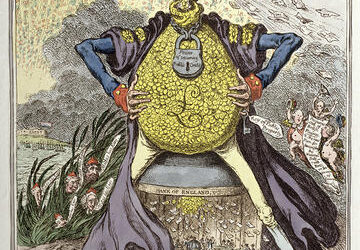
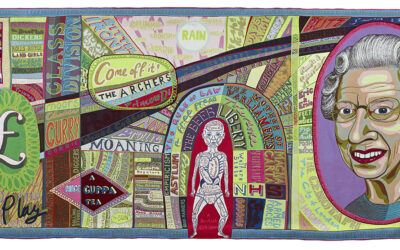







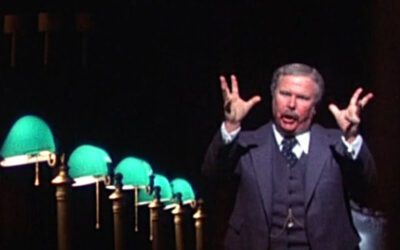

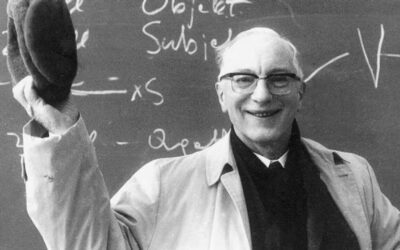

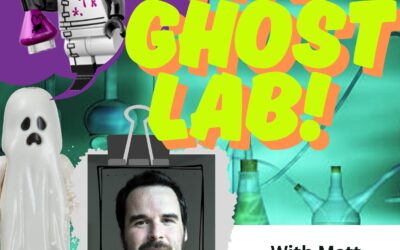







0 Comments